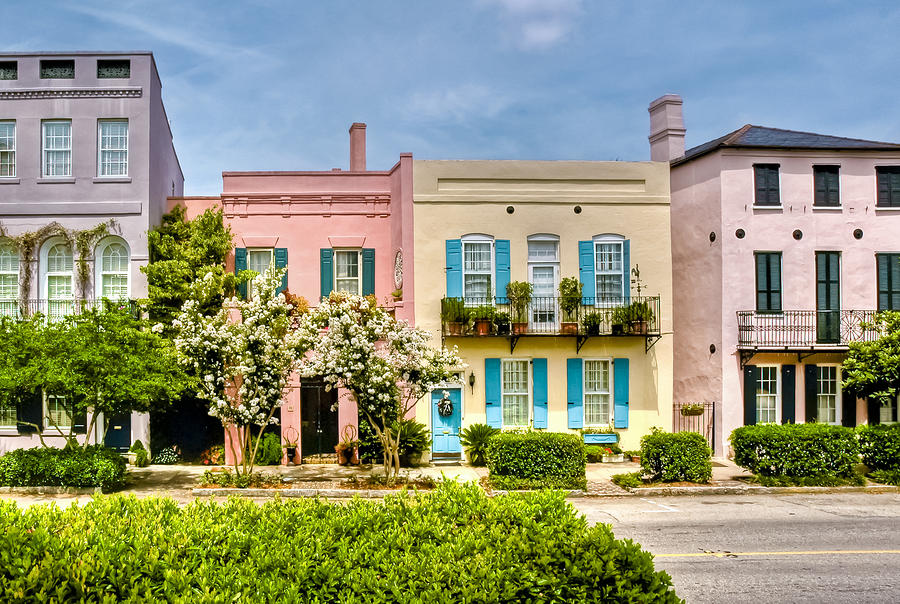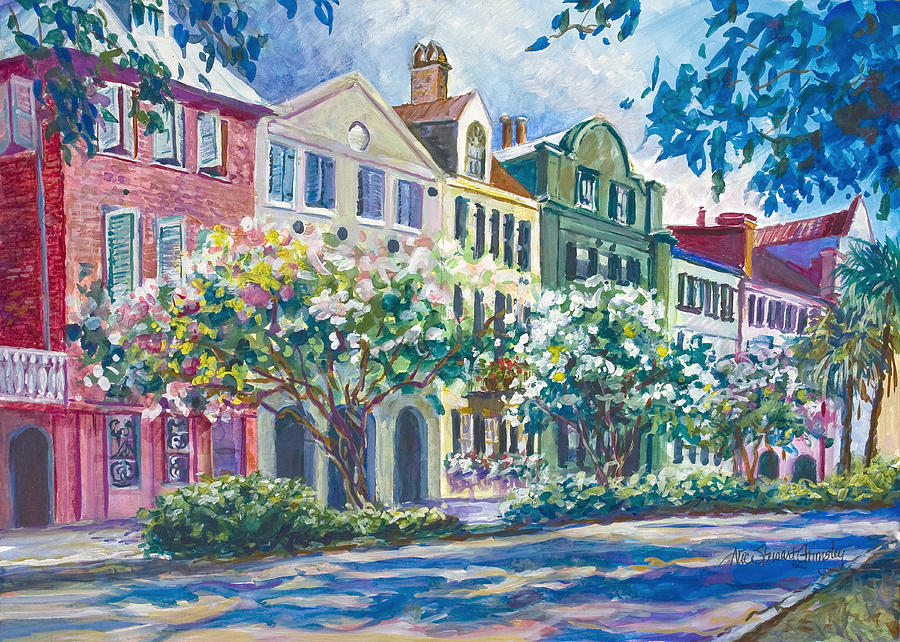Georgian Architecture: Historic Rainbow Row in Charleston, South Carolina
A lovely array of pastel rainbow painted row houses align the street in Charleston, South Carolina. They are the longest formation of Georgian row houses in the United States and have a rich history.

About a decade before the US civil war, in 1778, a fire broke out on East Bay st, part of where “Rainbow Row” resides today, destroying many of the houses along the street. After the civil war, this area devolved into deteriorating and unlivable conditions.
They remained this way until the 1920s when, two women Susan Pringle Frost, the founder of the Society for the Preservation of Old Dwellings purchased six of the buildings and Dorothy Haskell Porcher Legge purchased a section of these in order to restore and renovate them. Porcher chose to paint the newly renovated row houses in a colonial caribbean style palette and future owners followed creating the well-loved and admired Rainbow Row we know today.

As with much art and architecture from the past, there are many legends and stories as to the reasons the historic Rainbow Row houses were painted in these colors. Many of the stories suggest they were for identification purposes, for example, because “Rainbow Row” faces a the riverfront of the Cooper River, the colors were to help drunken sailors coming in to know which homes to bunk in, where as some myths claim the color use was to tell owners where to send illiterate slaves for shopping purposes.

Rainbow Row is comprised of thirteen buildings from 79 to 107 East Bay Street in Charleston, South Carolina.

The Georgian architectural style dates back from 1714 to 1830 having its origins in mostly english-speaking countries. The style of Rainbow Row is comprised of Colonial Georgian architecture which focuses primarily on symmetry, proportion and balance accentuating the classical architecture of Greece and Rome with less fixation on ornamental accents on the exterior design combined with the architectural style of terrace houses or row houses which are mirror image houses with shared side walls originating in Europe in the 16th century.

Rainbow Row has a fascinating history incorporating art, design, aesthetic, myth and legend, a prime highlight in United States historic architectural style.